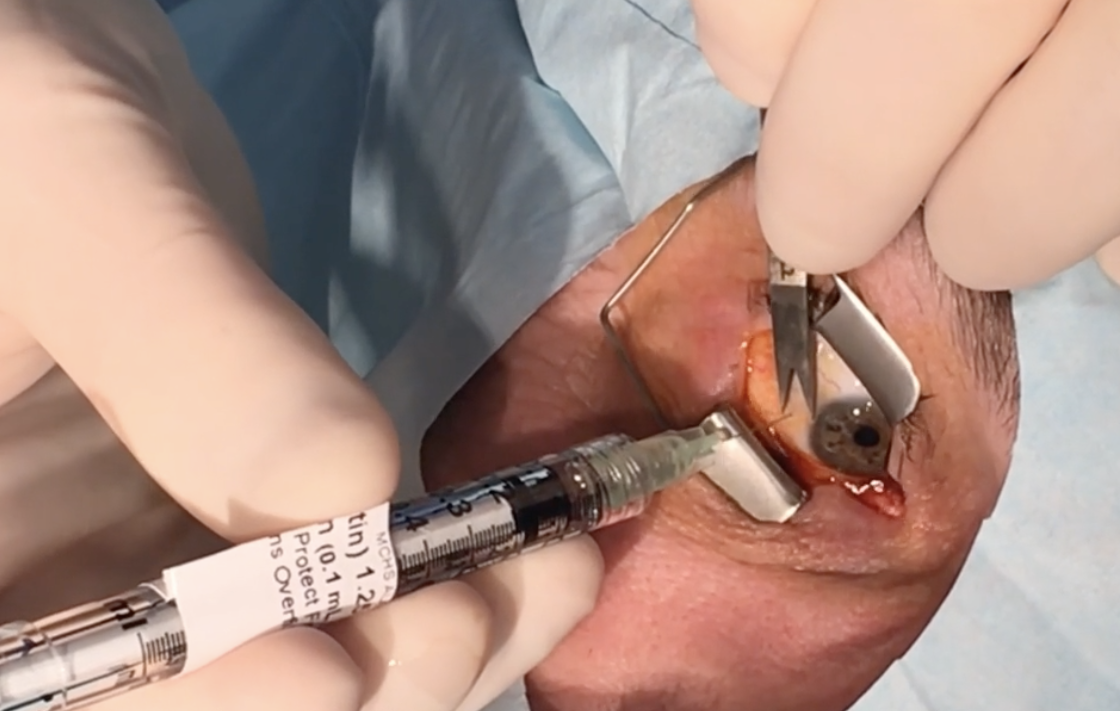 |
|
Repeated IVI reduced the dry eye profile of patients with AMD. Photo: Leo Skorin, OD. Click image to enlarge. |
Needless to say, no one wants to have a needle stuck into their eye. But for the AMD patients who routinely have to undergo this, the silver lining seems to be an improvement in dry eye symptoms. A study recently published in Ophthalmology reported that repeated intravitreal injections with anti-VEGF with preoperative povidone-iodine application was associated with decreased meibomian gland loss, increased tear volume and reduced signs of inflammation.
This retrospective controlled, observational study included 90 neovascular AMD patients with a mean age of 77.5. The fellow eye of each was used as a control. Tear film and ocular surface examinations were performed on a single occasion at a minimum of four weeks after intravitreal injections. A pre-intravitreal injection asepsis protocol with povidone-iodine was applied.
The median number of intravitreal injections of anti-VEGF in treated eyes was 19.5 overall and eight within the last 12 months. Mean meibomian gland (MG) loss in the upper eyelid was 19.1% in treated eyes and 25.5% in untreated fellow eyes. For the lower eyelid, median gland loss was 17.4% in treated eyes and 24.5% in fellow eyes. Mean bulbar redness score was 1.32 in treated eyes vs. 1.44 in fellow eyes. Median tear meniscus height was 0.36mm in treated eyes and 0.32mm in fellow eyes. There were no differences between treated and fellow eyes regarding noninvasive tear breakup time, tear film osmolarity, Schirmer test, corneal staining, fluorescein tear film breakup time or meibomian gland expressibility or quality.
“Eyelid hygiene is part of the recommended treatment for chronic lid margin inflammation including MGD and posterior blepharitis, and a possible mechanism for a beneficial effect on MG and ocular surface health could be that repeated [povidone-iodine] application limit commensals through its potent antimicrobial properties,” the study authors concluded in their paper. “Further investigations with prospective studies are warranted to support our findings and explore the mechanisms involved.”
Malmin A, Thomseth VM, Forland PT, et al. Associations between serial intravitreal injections and dry eye. Ophthalmology. January 21, 2023. [Epub ahead of print]. |


